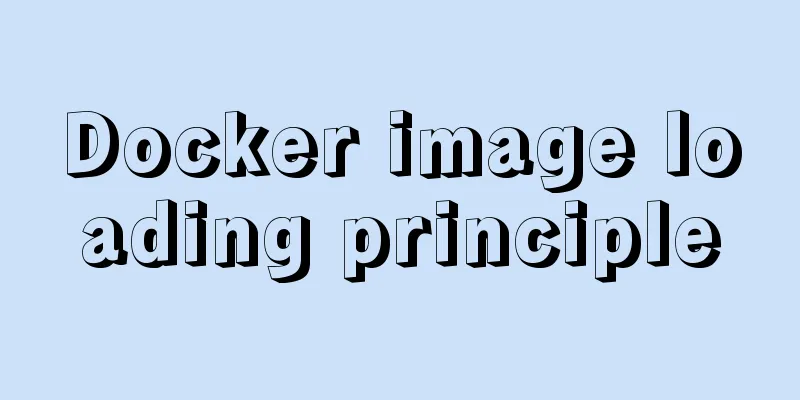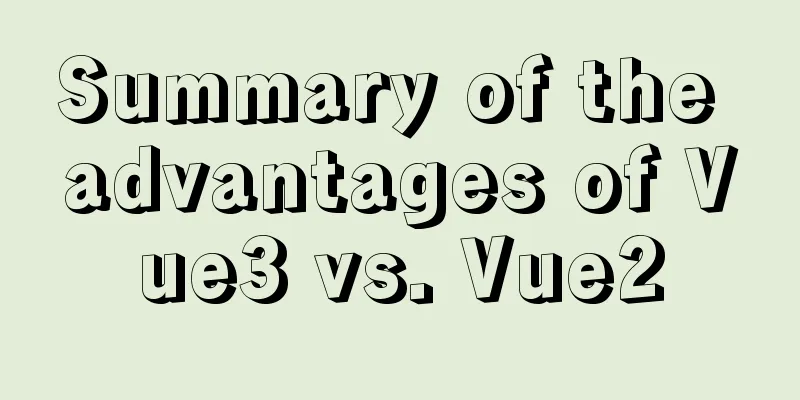Table of contents- Docker images
- What is a mirror?
- Docker image loading principle
- Commit Mirror
- Docker Images Summary
Docker images What is a mirror?- An image is a lightweight, executable Standalone software package for Packaged software runtime environment and software developed based on the runtime environment, which contains the software required to run a certain software Everything, including
代碼, runtime,庫,環境變量, and配置文件. - All applications can be directly packaged into Docker images and run directly!
- How to get the image?
Remote repository download Friend Copy Make a mirror DockerFile yourself Docker image loading principle UnionFS
- UnionFS: Union File System (UnionFS) is a
分層,輕量級and高性能file system that supports file system modifications to be superimposed layer by layer as a single commit, and can unite several directories into a single virtual file system. The Union file system is the basis of Docker images. Images can be inherited through layering. Based on the base image (without a parent image), various specific application images can be created. - Features: One time Load multiple file systems at the same time, but from the outside, only one file system can be seen. Joint loading will load all file systems at different levels. Superimposed, so The final file system will contain all the underlying files and directories
Docker鏡像加載原理
- The docker image is actually composed of layers of file systems, such as UnionFS.
- bootfs (boot file system) mainly includes bootloader and kernel. Bootloader mainly boots and loads kernel. When Linux is just started, the bootfs file system will be loaded. At the bottom layer of the Docker image is boots. This layer is the same as our typical Linux/Unix system, including the boot loader and the kernel. When the boot is loaded, the entire kernel is in the memory. At this time, the right to use the memory has been transferred from bootfs to the kernel, and the system will also unload bootfs.
- roots (root fle system), above bootfs. Contains standard directories and files such as /dev, /proc, /bin, /etc in a typical Linux system. rootfs refers to various operating system distributions, such as Ubuntu, Centos, etc.

Normally, CentOS we install in a virtual machine is several GB, why is Docker only 200M? 
- For a streamlined OS, rootfs can be very small and only needs to include the most basic commands, tools and program libraries, because the underlying layer directly uses the host kernel itself and only needs to provide roots. It can be seen that for different Linux distributions, bootfs is basically the same, but rootfs may be different, so different distributions can share bootfs.
- Virtual machines are at the minute level, containers are at the second level! Understanding
Docke in layers Layered thinking: Download layer by layer, check layer by layer, skip if it exists, otherwise download
[root@docker ~]# docker pull redis
Using default tag: latest
latest: Pulling from library/redis
69692152171a: Already exists
a4a46f2fd7e0: Pull complete
bcdf6fddc3bd: Pull complete
2902e41faefa: Pull complete
df3e1d63cdb1: Pull complete
fa57f005a60d: Pull complete
Digest: sha256:7e2c6181ad5c425443b56c7c73a9cd6df24a122345847d1ea9bb86a5afc76325
Status: Downloaded newer image for redis:latest
docker.io/library/redis:latest - Why does the Docker image adopt this layered structure?
- The biggest benefit, in my opinion, is resource sharing! For example, if multiple images are built from the same base image, the host only needs to keep one base image on disk, and only one base image needs to be loaded into memory, so that it can serve all containers, and each layer of the image can be shared.
- The way to view the image layering is through
docker image inspect +容器command! - Observe
Layers

Understanding the meaning of stratification - All Docker images are Starting from a base image layer, when modifications are made or new content is added, Create a new image layer on top of the current image layer
- To give a simple example, if you create a new image based on Ubuntu Linux 16.04, this is the first layer of the new image; if you add a Python package to the image, a second image layer will be created on top of the base image layer; if you continue to add a security patch, a third image layer will be created.
- The image currently contains 3 image layers, as shown in the figure below (this is just a very simple example for demonstration).

It is important to understand that while additional image layers are added, the image always remains a combination of all current images. The following figure shows a simple example where each image layer contains three files, and the image contains six files from two image layers. 
- The image layer in the above picture is slightly different from the previous one. The main purpose is to facilitate the display of files.
- The following figure shows a slightly complex three-layer image. From the outside, the entire image only has 6 files. This is because file 7 in the top layer is an updated version of file 5.

- In this case, the files in the upper image layer overwrite the files in the lower image layer. This causes the updated version of the file to be added to the image as a new image layer.
- Docker implements the image layer stack through the storage engine (the new version uses the snapshot mechanism) and ensures that multiple image layers are displayed as a unified file system.
- The storage engines available on Linux are AUFS, Overlay2, Device Mapper, Btrfs, and ZFS. As the name implies, each storage engine is based on the corresponding file system or block device technology in Linux, and each storage engine has its own unique performance characteristics.
- Docker only supports one storage engine on Windows: windowsfilter, which implements layering and CoW based on the NTFS file system[1].
- The following figure shows the same three-layer image as the system display. All image layers are stacked and merged to provide a unified view to the outside world.

Layered download benefit Assuming that the layers of some applications are the same, they can be reused directly! Features - Docker images are Read-only, when the container starts, a new writable layer is loaded on top of the image!
- This layer is what we usually call the container layer (run), and everything below the container is called the image layer (remote pull)!
- All operations are based on
容器層

Commit Mirror- How to submit a mirror?
-
Docker commit
docker commit commits the container to become a new copy docker commit -m="committed description" -a="author" container id target image name: [TAG]
#Run a default tomcat image [root@docker ~]# docker run -it -p 8080:8080 tomcat
[root@docker ~]# docker ps
CONTAINER ID IMAGE COMMAND CREATED STATUS PORTS NAMES
792ca37197e8 tomcat "catalina.sh run" 34 seconds ago Up 32 seconds 0.0.0.0:8080->8080/tcp, :::8080->8080/tcp upbeat_mcnulty
[root@docker ~]# docker exec -it 792ca37197e8 /bin/bash
#Found that this default tomcat does not have webapps application, because of the mirroring, the official mirroring default webapps has no files, copy the basic files yourself root@792ca37197e8:/usr/local/tomcat# cp -r webapps.dist/* webapps
#Browser access, test successful http://192.168.100.100:8080/
#Submit the modified container to become a new image [root@docker ~]# docker commit -a="pakho" -m="add webapps app" 792ca37197e8 tomcat02:1.0
sha256:d6d429f9d2ba25af8f66bd3e7a7de489cf2219828ea755ce1d0a1a7816c27731
[root@docker ~]# docker images
REPOSITORY TAG IMAGE ID CREATED SIZE
tomcat02 1.0 d6d429f9d2ba 28 seconds ago 672MB Docker Images Summary 
- The main features of Docker images are layering, copy-on-write, content addressing, and union mounting.
- Docker images are the basis for running Docker containers. Without Docker images, there can be no Docker containers. This is also one of the design principles of Docker.
- It is understandable that a Docker image is, after all, an image and is static content; a Docker container is different, as it is dynamic content. When it comes to dynamic content, people easily think of things like processes, memory, CPU, etc. Indeed, Docker containers, as dynamic content, will contain these
- For ease of understanding, you can think of a Docker container as one or more running processes, and these running processes will occupy corresponding memory, corresponding CPU computing resources, corresponding virtual network devices, and corresponding file system resources. The file system resources occupied by the Docker container are provided by the image layer file of the Docker image.
The above is the detailed content of the Docker image principle. For more information about Docker images, please pay attention to other related articles on 123WORDPRESS.COM! You may also be interested in:- Docker image creation and one-click packaging and deployment of the entire project
- idea combines docker to realize image packaging and one-click deployment
- How to use domestic image warehouse for Docker
- Solution to the problem that the image name is none after Docker load
- Detailed explanation of where the image pulled by docker is stored
- How to use Docker to package and deploy images locally
- How to change the domestic image source for Docker
|



















